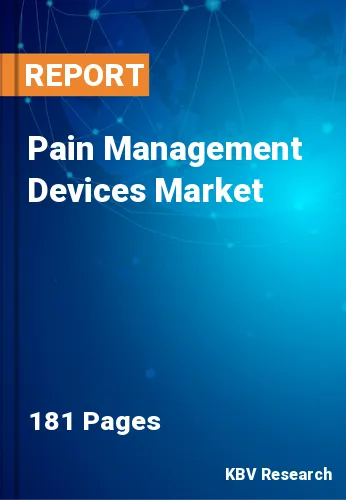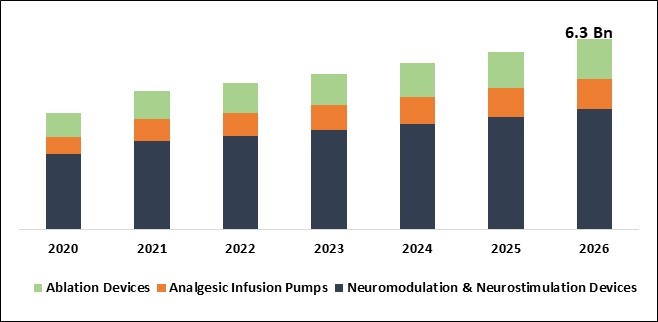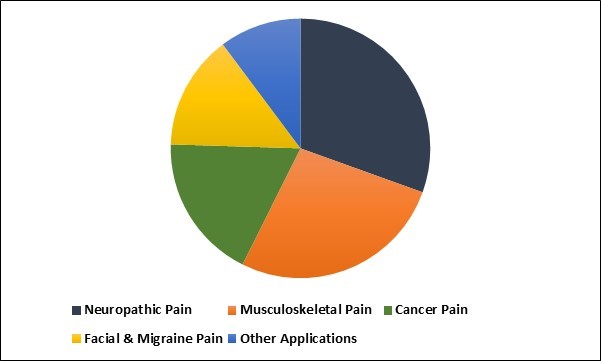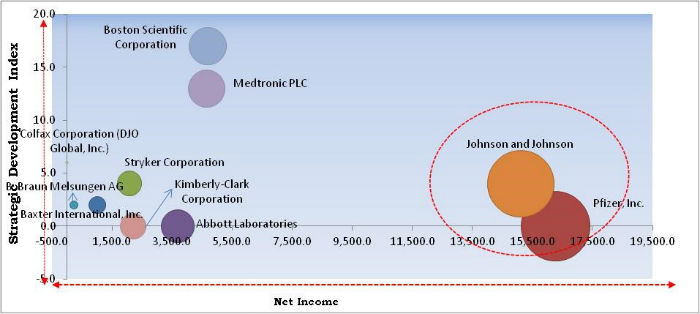
The Global Pain Management Devices Market size is expected to reach $6.3 billion by 2026, rising at a market growth of 8.5% CAGR during the forecast period. Pain management is a branch of medical science that relieves patients with chronic pain from their suffering. Acute pain has a sudden onset of action, while chronic pain persists for a longer period of time, which leads to the need for its control. Pain management devices are medical devices used to relieve different forms of pressure such as neuropathic pain, cancer pain, nociceptive pain, musculoskeletal pain among others. Stimulators for the spinal cord, transcutaneous electrical nerve stimulators, analgesic infusion pumps, and ablation devices are different types of pain management devices available on the market.
Global Pain Management Devices Market Size

With Covid-19 infections rising globally, there is also deepening apprehension about a shortage of essential life-saving devices and other essential medical supplies to prevent the spread of this pandemic and provide optimum care to those infected. Additionally, for COVID-19 patients, who may require critical care, ventilators act as a vital treatment preference until a pharmacological treatment is developed. In addition, a wide range of test-kits (antibody tests, self-administered, and others) involves a fast acceleration in the manufacturing phase.
Growth in the global market for pain management devices is driven by the increase in geriatric population, a rise in chronic pain pervasiveness, growing awareness of people's awareness of pain management devices, improved investment in R&D to develop innovative products and the launch of new products. Additionally, growing demand for pain management devices in emerging countries and increasing the use of pain management devices for chronic pain management are other factors contributing to market growth. In addition, the untapped potential offered by developing economies is presenting lucrative market expansion opportunities over the forecast period. Nevertheless, reactions to hypersensitivity and postoperative infections caused by the use of these devices restrict their adoption, which hampers the market growth.
Pain Management Devices Market Share

Based on Product, the market is segmented into Neuromodulation & Neurostimulation Devices, Analgesic Infusion Pumps and Ablation Devices. Based on Application, the market is segmented into Neuropathic Pain, Musculoskeletal Pain, Cancer Pain, Facial & Migraine Pain and Other Applications. Based on Regions, the market is segmented into North America, Europe, Asia Pacific, and Latin America, Middle East & Africa.
The major strategies followed by the market participants are Partnerships and Acquisition. Based on the Analysis presented in the Cardinal matrix, Johnson and Johnson and Pfizer, Inc. are the forerunners in the Pain Management Devices Market. Companies such as Boston Scientific Corporation, Medtronic PLC, Colfax Corporation, Stryker Corporation, Kimberly-Clark Corporation, and Abbott Laboratories, Baxter International, Inc., and B. Braun Melsungen AG are some of the key innovators in the market.
Free Valuable Insights: Global Pain Management Devices Market to reach a market size of $6.3 billion by 2026
Pain Management Devices Market Cardinal Matrix

The market research report covers the analysis of key stake holders of the market. Key companies profiled in the report include Abbott Laboratories, B. Braun Melsungen AG, Baxter International, Inc., Pfizer, Inc., Boston Scientific Corporation, Johnson and Johnson, Medtronic PLC, Kimberly-Clark Corporation, Stryker Corporation, and Colfax Corporation (DJO Global, Inc.)
» Partnerships, Collaborations, and Agreements:
» Acquisition and Mergers:
» Product Launches and Product Expansions:
» Approvals:
Market Segmentation:
By Product
By Application
By Geography
Companies Profiled
The global pain management devices market size is expected to reach $6.3 billion by 2026.
Abbott Laboratories, B. Braun Melsungen AG, Baxter International, Inc., Pfizer, Inc., Boston Scientific Corporation, Johnson and Johnson, Medtronic PLC, Kimberly-Clark Corporation, Stryker Corporation, and Colfax Corporation (DJO Global, Inc.)
The expected CAGR of the pain management devices market is 8.5% from 2020 to 2026.
The North America market dominated the Global Pain Management Devices Market by Region in 2019.
Neuromodulation & neurostimulation devices are currently leading the global market, and this trend is projected to continue over the forecast period.
Our team of dedicated experts can provide you with attractive expansion opportunities for your business.
